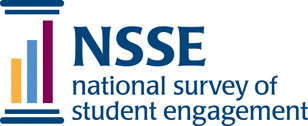Last modified: Tuesday, June 7, 2011
Spanish version of NSSE 'Pocket Guide to Choosing a College' now available
FOR IMMEDIATE RELEASE
June 7, 2011
BLOOMINGTON, Ind. --In the last decade, only a third of Latino high school graduates aged 18 to 24 enrolled in colleges and universities, compared to 44 percent of non-Latino whites. Although demographic data suggest that Latino students will be entering postsecondary education at higher rates, more needs to be done to ensure that all students and their families have the information they need to navigate the college search process and succeed in college.
The recently released Spanish-language version of the National Survey of Student Engagement's (NSSE) Pocket Guide to Choosing a College -- Una Guia de Bolsillo Para Escoger una Universidad: Preguntas a hacer en tus visitas universitarias -- expands access to Spanish-speaking families.
The college exploration process is complex and choosing a college can be difficult. Too often students and their families are challenged to obtain accessible and useful information. What kinds of questions should students ask on a college visit?
Who and what are the best resources to consult? NSSE's Pocket Guide includes important questions that students and parents should consider as they visit colleges and universities or explore them online. The guide suggests questions to ask campus representatives -- the tour guide, admissions staff and currently enrolled students. Responses to the questions may help students and families get a better sense of how likely a student is to learn, grow and develop at that institution.
High school counselors, college administrators and admissions staff have already used the previous version of the Pocket Guide with much success. Patricia Mahoney at Seneca Valley School in Maryland described how the guide was used at the school's Hispanic Parents Night "to inform parents on the importance of high school course selection and rigor and preparation for college, and the process of college selection." Many students at Seneca Valley are first-generation college goers, and Mahoney is heading up "the process of educating the whole family to the system into which they are embarking."
Kim Sanders, a counselor at Richland Northeast College and Career Center in South Carolina, indicated that the Spanish Pocket Guide was distributed at the state's Hispanic Community Forum. Emily Mattran, a Career Center Manager at Chaska High School in Minnesota, confirmed that "resources like this are so helpful to those of us trying to encourage students and families!" She affirmed that with a growing Hispanic population and a focus on increasing college access, such guides will be helpful to students and parents.
College admission offices have added the Pocket Guide to their Spanish-language admission materials. Dana Paul, vice president for enrollment management at LaGrange College, reported that they "created a Spanish-language admission information brochure that will be distributed to students and their families in Georgia, and the Spanish-language version of the Pocket Guide will be an excellent companion piece."
NSSE offers free copies of the Spanish Pocket Guide to high schools, colleges and non-profit education organizations. Professional consultants and for-profit organizations pay a small fee. Students and parents can either check with their counselors for a copy or download one in English or Spanish from nsse.iub.edu/html/pocket_guide_intro.cfm.
The National Survey of Student Engagement based at IU has contributed volumes to the research of how college students learn. The NSSE survey began as way to uncover more about university practices than is revealed in typical college rankings by gathering data regarding use of effective educational practices on campus. It has grown from 70 institutions in 1999 to a total of about 1,400 institutions and 2 million students in the U.S. and Canada participating. Adaptations of NSSE are being used in Australia, Asia, South Africa and elsewhere.
